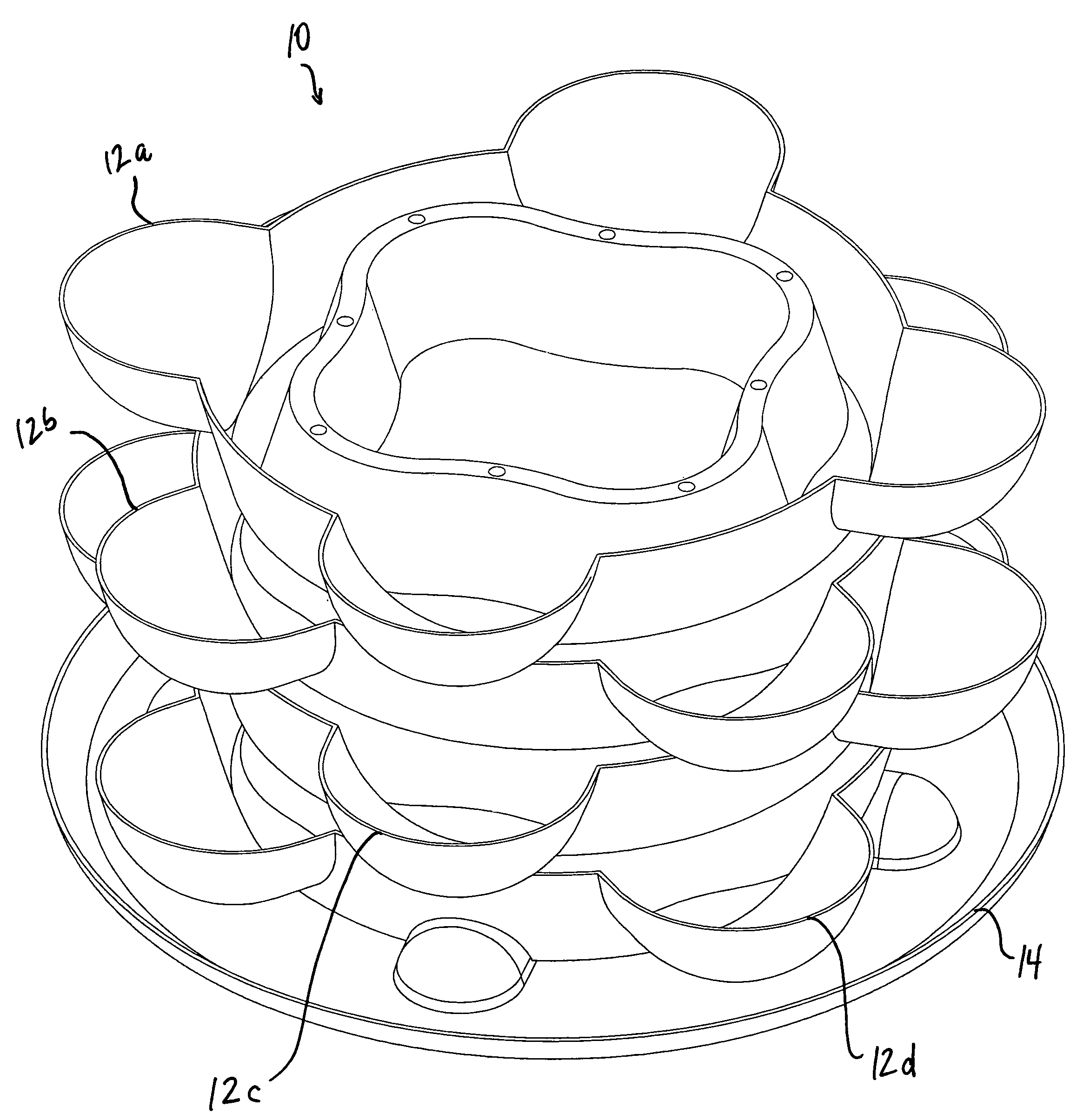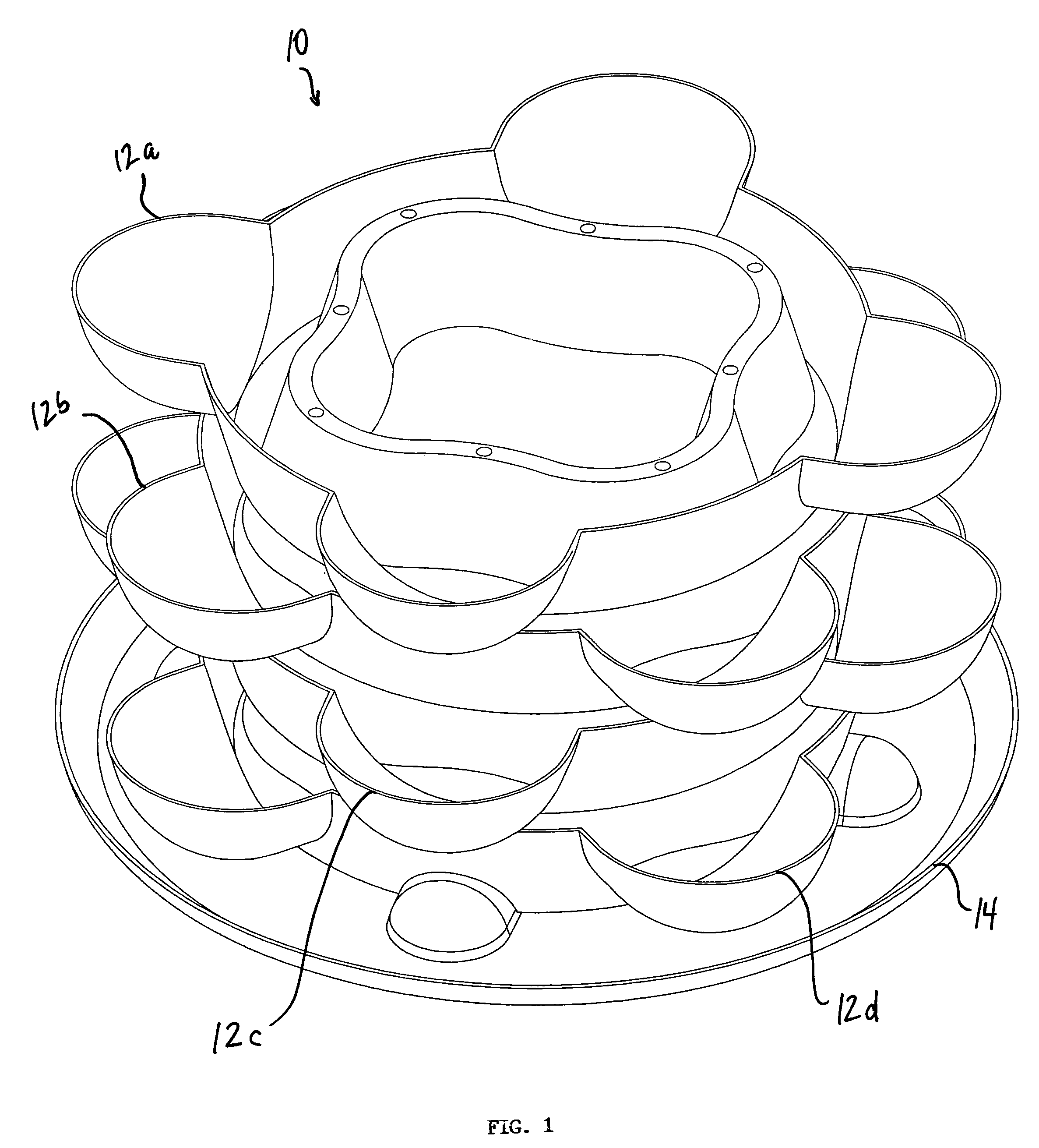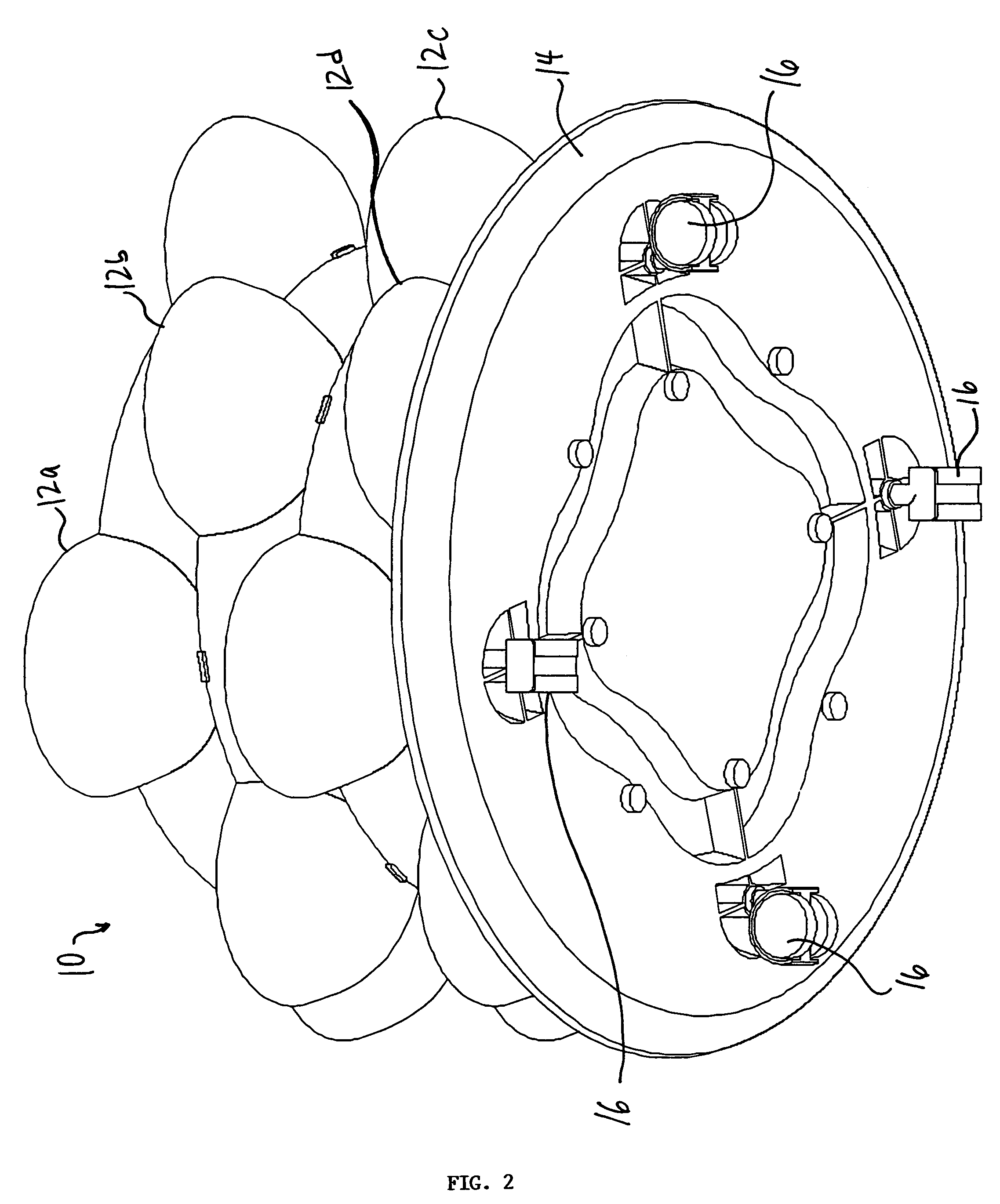Stackable planter
a planter and stacking technology, applied in the field of stackable planters, can solve the problem that no prior art planters provide a system
- Summary
- Abstract
- Description
- Claims
- Application Information
AI Technical Summary
Benefits of technology
Problems solved by technology
Method used
Image
Examples
Embodiment Construction
[0046]The following description provides an overview and detailed description of several preferred embodiments of a stackable planter constructed in accordance with the present invention. While illustrative examples are described herein, these examples are not intended to be exhaustive or to limit the invention to the precise forms disclosed. Similarly, any process steps described herein, e.g., for assembling or configuring an embodiment of the present invention, may be interchangeable with other steps, or several combinations of steps, in order to achieve the benefits and advantages of the invention.
[0047]FIGS. 1–4 and FIG. 28 illustrate one exemplary embodiment of a stackable planter constructed according to the present invention. In this embodiment, the stackable planter 10 is comprised of four trays, 12a, 12b, 12c, 12d, and a cart 14. In this particular embodiment, the cart 14 has wheels 16 fixed thereto, as shown in FIGS. 2, 3, and 28. The wheels 16, as illustrated, are shown a...
PUM
 Login to View More
Login to View More Abstract
Description
Claims
Application Information
 Login to View More
Login to View More - R&D
- Intellectual Property
- Life Sciences
- Materials
- Tech Scout
- Unparalleled Data Quality
- Higher Quality Content
- 60% Fewer Hallucinations
Browse by: Latest US Patents, China's latest patents, Technical Efficacy Thesaurus, Application Domain, Technology Topic, Popular Technical Reports.
© 2025 PatSnap. All rights reserved.Legal|Privacy policy|Modern Slavery Act Transparency Statement|Sitemap|About US| Contact US: help@patsnap.com



